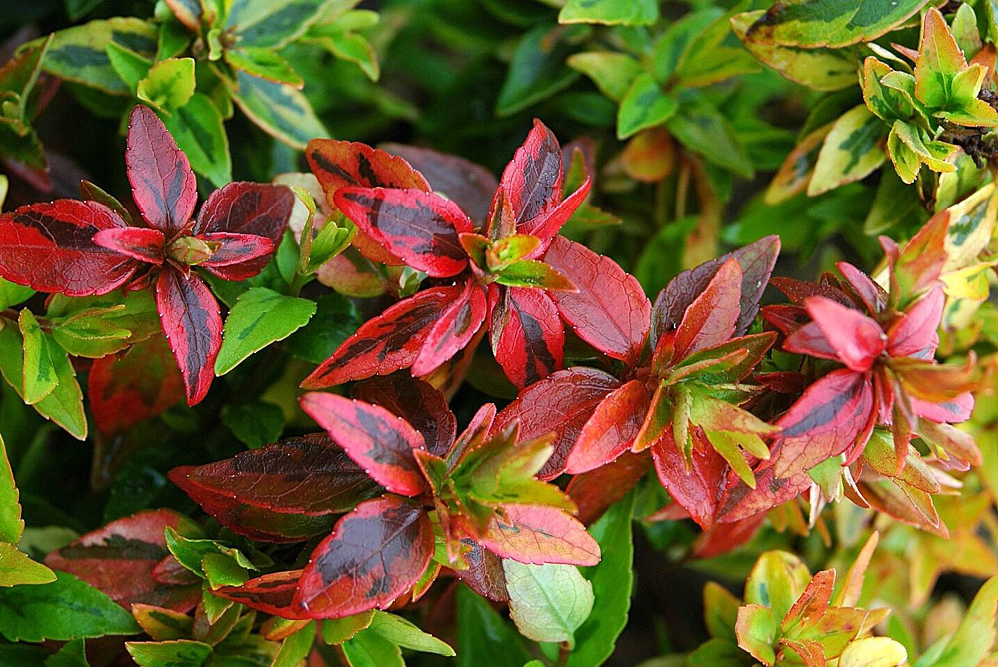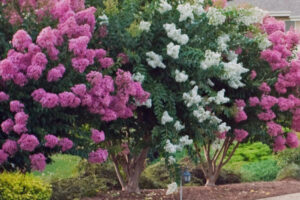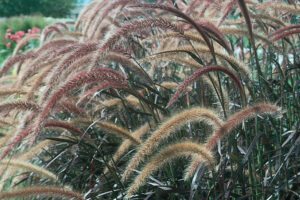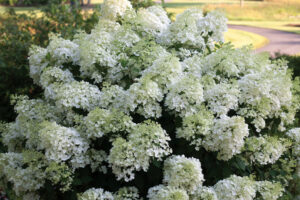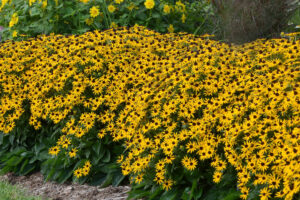Botanical Background
Abelia’ Kaleidoscope’ is a cultivar of Abelia x grandiflora. These hybrid species combine the genetics of Abelia chinensis and Abelia uniflora. The genus Abelia is part of the honeysuckle family (Caprifoliaceae). The plant is native to eastern Asia, particularly China and Japan, where the original species were first cultivated for their ornamental beauty and toughness.
Introduction of the ‘Kaleidoscope’ Cultivar
‘Kaleidoscope’ is a relatively recent cultivar developed for its striking variegated foliage and compact growth habit. It was bred as an improvement over earlier varieties, offering year-round color and increased visual interest in landscapes. The cultivar was created by breeding efforts to enhance the popular Abelia x grandiflora, known for its fragrant flowers and hardy nature.
Interesting Facts
1. Colorful Foliage: The most distinctive feature of Abelia’s’ Kaleidoscope’ is its variegated foliage. The leaves change color throughout the year, starting with a light green center and yellow margins in the spring. As the seasons progress, the yellow margins become more golden, and in the fall, they take on shades of orange and red, hence the “kaleidoscope” effect.
2. Evergreen to Semi-evergreen: The kaleidoscope retains its foliage year-round in mild climates, making it evergreen. In colder climates, it may become semi-evergreen, shedding some of its leaves during winter but still maintaining an attractive appearance.
3. Compact Growth: Abelia’ Kaleidoscope’ is known for its compact and mounded growth habit. It typically reaches 2-3 feet in height and spreads to about 3-4 feet wide, making it ideal for small gardens, borders, or container plantings.
4. White, Fragrant Flowers: Besides its colorful foliage, Abelia’ Kaleidoscope’ produces clusters of small, tubular, white flowers from summer through fall. The lightly fragrant flowers attract bees, butterflies, and other pollinators, enhancing the garden’s ecosystem.
5. Hardy and Heat Tolerant: Abelia’ Kaleidoscope’ is highly adaptable to different growing conditions. It thrives in USDA hardiness zones 6-9 and is heat—and drought-tolerant once established, making it a popular choice for low-maintenance gardens.
6. Low Maintenance: This variety is easy to care for, requiring minimal pruning to maintain its shape. Its dense growth also makes it an effective ground cover or low hedge.
7. Disease and Pest Resistance: Abelia’ Kaleidoscope’ is relatively resistant to common pests and diseases, which adds to its appeal as a low-maintenance landscape plant.
8. Versatile in Garden Design: Due to its small size, vibrant foliage, and long blooming period, Abelia’ Kaleidoscope’ is versatile in garden design. It can be used as a specimen plant, in mass plantings, as a hedge, or in containers. Its year-round color makes it an excellent choice for formal and informal gardens.
Key Growing Information
- Light Requirements: Abelia ‘Kaleidoscope’ performs best in full sun to partial shade. The foliage colors are most vibrant in full sun.
- Watering: It is moderately drought-tolerant once established but prefers regular watering, especially in hot, dry climates.
- Soil Preferences: It prefers well-drained soils and can tolerate a range of pH levels from slightly acidic to neutral.
- Pruning: Light pruning in the spring can help maintain the plant’s shape, but it is not necessary for its health.
Abelia’ Kaleidoscope’ is a stunning cultivar with year-round color and a compact growth habit that suits many garden landscapes. Its low maintenance, hardiness, and resistance to pests and diseases make it a favorite for experienced and beginner gardeners. Its ever-changing foliage and delicate, fragrant flowers provide a dynamic and beautiful presence in any garden.

